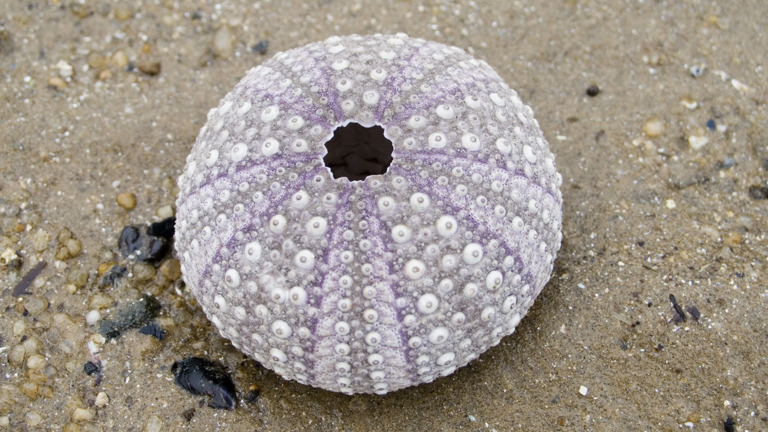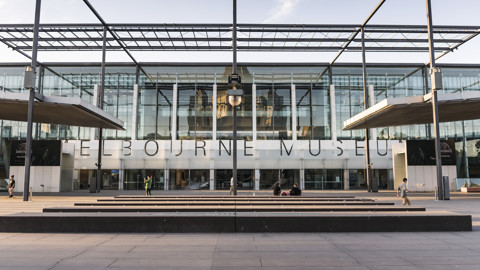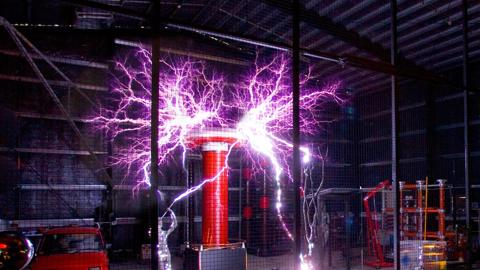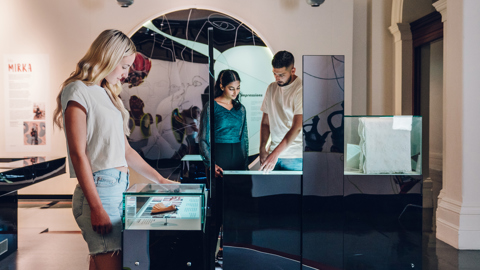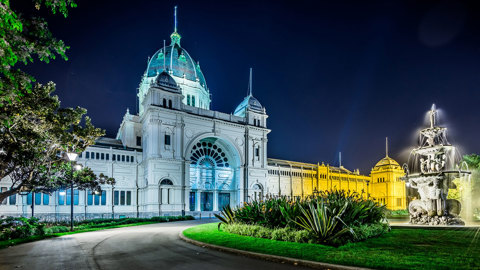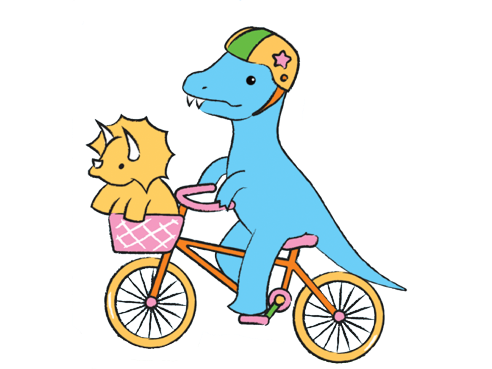
Where land meets sea: The power of coastal ecosystems
Mangroves. Seagrasses. Saltmarshes. Kelp. Flourishing at the frontier between land and sea, discover how these coastal environments cool our planet, help ocean ecosystems thrive, and have ancient connections with Tasmania’s First Peoples.
Understanding these vibrant ecosystems is an important research area for Museums Victoria Research Institute and organisations across the world.
The ocean is vast, but travel it for long enough and you’ll reach a coast.
Here, shallow waters can be drenched in sunlight. Salty ocean water inundates the soils of muddy silt and clay. The sediments have little oxygen. And at this intersection of ocean and land, in shallow sandy waters and muddy, salty, oxygen-poor soils, extraordinary environments thrive.
‘Think of them as marine forests, similar to those you would find on land,’ says Dr Daniel Gorman, senior research scientist and coastal marine ecosystem expert at CSIRO.
Let’s tour these coastal environments.
Saltmarshes
Saltmarshes are coastal wetlands. Low-growing plants thrive in the boggy, oxygen-poor soil, hardy and salt-resistant. As the tide rises, this unique community of shrubs, grasses and herbs is flooded with salt water.
Wetland birds like herons and egrets pick at the crustaceans and worms making their homes in the soil as fish dart in the shallows.
‘Saltwater wetlands, I would call them, as they’re frequently inundated by the tide,’ says Dr Gorman.
Mangroves
Mangroves are shrubs or trees that grow along coastlines. Their complex tangles of roots create an underwater lattice—a complex, protective environment where fish, crustaceans and insects can hide in sheltered pockets. Mangroves thrive in the salty conditions and muddy soils where other trees would struggle to survive.
Mangroves ‘prefer warmer temperatures, so they tend to cluster around the equator, sometimes creating huge forests,’ says Dr Gorman. Although typically tropical, mangroves can live in cooler climates—in Australia, mangroves can come as far south as Melbourne.
Seagrasses
Seagrasses are flowering plants. Like any plant, they need light and typically grow in shallow waters. Soaking up the sunlight, they create stunning underwater meadows that shelter and feed coastal marine life, including fish, turtles, sharks, molluscs, sea stars and even dugongs and manatees.
Kelp
Not technically a plant, but brown algae, kelp can grow into towering underwater forests. As tall as trees, marine animals like fish and seals weave in and out of their swaying fronds. Like seagrass, kelp species need sunlight and so are found near the coast, but some can be as deep as 50 m and grow just as tall.
So what makes these green fringes of the ocean so special?
They store blue carbon.
What is blue carbon?
Blue carbon is not carbon that is coloured blue.
Blue carbon ‘has been given this iconic name because it comes from the ocean—distinguishing it from land-based carbon storage,’ explains Dr Gorman. The ‘blue’ ocean environments include these coastal ecosystems.
All living things are made of carbon, from algae to mangroves to your own body. In the atmosphere, carbon exists as a gas: carbon dioxide. Plants take in this gas. They then use the carbon to create living matter, like leaves, roots, flowers and bark.
As roots grow and leaves fall, the carbon inside plants accumulates in the sediment beneath. The carbon that was once in the air is now stored in the ground, sometimes for thousands of years.
Coastal plants are no different.
The ocean also absorbs carbon dioxide directly into the water, taking it out of the atmosphere.
Why is carbon storage important?
Store carbon for long enough, and over millions of years it can become coal or oil. Dig it up in huge quantities and burn it, and the carbon is released back into the atmosphere as carbon dioxide.
Carbon dioxide in the atmosphere is like a blanket. It traps heat that would otherwise radiate from the Earth out into space. This ability to trap heat and warm the planet is what makes carbon dioxide a greenhouse gas.
Without carbon storage to remove some of this excess carbon released by humans, the Earth would be a far warmer place.
‘The key is to trap it permanently, or have it stored for a long time,’ says Dr Gorman.
‘We don’t want it released again back into the atmosphere—that’s where we have all of our issues with climate change.’
But carbon is stored all over the planet. So what makes blue carbon so special?
Why blue carbon matters
‘Per unit, [coastal ecosystems] store a lot more carbon than terrestrial forests do,’ says Dr Gorman.
‘There’s estimates out there that mangroves can store carbon 40 times faster than a typical terrestrial forest.’
Mangroves grow fast, pulling carbon from the air and storing it in the sediment beneath. Meanwhile, their tangled roots trap drifting organic matter like the grates of a drain.
The debris can include seagrass, fallen leaves and pieces of kelp. All comprising of organic carbon.
In the muddy, low-oxygen soil, the organic matter produced and stored by the mangroves breaks down slowly. So slowly, that carbon can accumulate and be held for centuries.
‘So they’re essentially sequestering or burying [carbon] and slowly growing over the top of it and trapping it there, sometimes for a very long time,’ says Dr Gorman.
‘We’re talking hundreds of years.’
Seagrasses and saltmarshes also live in damp, muddy soils. Like mangroves, they store carbon rapidly and store it for centuries.
‘Some of these meadows where [seagrass is] growing and growing and growing on top of itself, they get to four metres deep. So if you could slice through the sediment, you would see 10,000 years’ worth of carbon, just accumulating and growing on top of itself,’ explains Dr Gorman.
Kelp forests, too, grow quickly. Growing on top of rocks rather than sediment, they don’t store carbon in the sand beneath, but they do hold considerable amounts in their specialised leaves or 'fronds'.
Kelp detritus can also sink to the deep sea, taking carbon with it.
‘That's why these blue carbon ecosystems are so important, because they do trap so much carbon. For such a small area globally—with mangroves and seagrasses covering much less of the Earth’s surface than forests—they really punch above their weight when it comes to storing carbon,’ says Dr Gorman.
Coastal environments really are climate heroes. Alongside storing carbon and cooling our climate, these unique places have even more to offer.
Give me a home among the kelp forests
‘The health of our planet is absolutely dependent upon healthy kelp,’ says Dr Emma Lee, professor at the National Centre for Reconciliation, Truth and Justice and a trawlwulwuy woman of tebrakunna country, north-east Tasmania.
In Dr Lee’s southern corner of Australia, kelp forests stretch like ancient golden columns towards the sunlight filtering from the water above.
‘Diving in some kelp forest habitats… is like swimming through a three-dimensional labyrinth. It’s really amazing,’ says Dr Gorman.
If you’ve ever swam between towering kelp, watched the gentle sway of algae in a rockpool, or picked up a piece of seaweed from the beach, you’ve been face-to-face with the home of a diverse community of organisms.
‘The diversity can be truly unbelievable,’ says Dr Gorman.
‘You’re talking thousands and thousands of individual animals in just a square metre of kelp,
‘Invertebrates and sponges and amphipods and copepods and everything.’
Like trees in a forest, kelp is a home, a food source and a hiding place for diverse communities of animals.
Travel into shallower waters, and the biodiversity of mangroves, saltmarshes and seagrasses is just as impressive. Many of the animals living here have one thing in common.
They’re babies.
‘When focusing on mangrove forests—and seagrass meadows—there’s a lot of evidence out there showing that these are critically important nursery grounds,’ says Dr Gorman.
Safe among the complex tangle of mangrove roots or swaying seagrass, juvenile fish, crabs and other marine animals feed and grow.
When the time comes, these juveniles become an important part of the world’s fisheries. As adults, they feed ecosystems—including our own.
‘The way these blue carbon systems support the productivity of coastal fisheries is immense, and of course supports the livelihood of millions of people globally,’ says Dr Gorman.
‘Kelp means that we can feed our families,’ says Dr Lee.
Human livelihoods have been tied to the ocean for millennia, and these connections run deep.
Caring for Sea Country
‘Kelp is part of Sea Country,’ says Dr Lee.
‘It is kin to us, see. Country is more than just geography. It is our emotional, cultural, spiritual connection to place… these great big forests of kelp that line the shores, that give us protection from the waves like a mother protecting her babies.’
For a trawlwulwuy Traditional Owner like Dr Lee, the seas are women’s domain.
‘What washes up on shore belongs to us as women, and so kelp becomes part of women’s work, women’s business and a seat of women’s power to have a say over Sea Country.’
Women’s business on Sea Country includes using kelp as a resource.
‘Kelp makes fantastic water carriers… Part of our culture as women was to craft kelp water carries and we’ve been doing this for thousands of years.’
For Dr Lee, the connection to kelp is as strong as it is ancient. Just beneath the surface, these swaying forests tumble with the tides, providing for our oceans, our planet, and us.
But with rising global temperatures, increasing frequency of storms, coastal development and pollution, the planet’s coastal ecosystems are under threat. Appreciating these environments is the first step toward ensuring they continue to thrive.
‘We have to start seeing kelp through different values. Kelp as family. Kelp as love. Kelp as an obligation on us as humans to have reciprocity with our Sea Country,’ says Dr Lee.
‘If more people could see these kelp forests and seagrass meadows, they would be truly amazed … Just to experience firsthand how complicated and complex and important these ecosystems are,’ reflects Dr Gorman.
‘They’re vitally important, beautiful features of our coasts that we should just cherish and love—that’s not even including all of the things that they provide back to us.’
From saltmarshes to mangroves, seagrasses to kelp, coastal environments touch our lives every day. They are quiet partners in the fight against climate change. When cared for, they provide food and resources.
They allow ocean life to thrive.
Dr Daniel Gorman is a senior research scientist at CSIRO. As a surfer, diver and naturalist, he has dedicated his career to studying coastal marine ecosystems. His current research focuses on blue carbon and raising awareness of coastal wetland ecosystems.
Dr Emma Lee is a trawlwulwuy woman from tebrakunna country, north-east Tasmania. She is a professor at the National Centre for Reconciliation, Truth and Justice at Federation University. She is an internationally recognised expert on Indigenous methodologies, especially as applied to land and sea management.
By taking action on climate change we can reduce the harms of ocean heating, acidification and sea-level rise. Discover how you can play your part in helping to shape a thriving future for our oceans.









